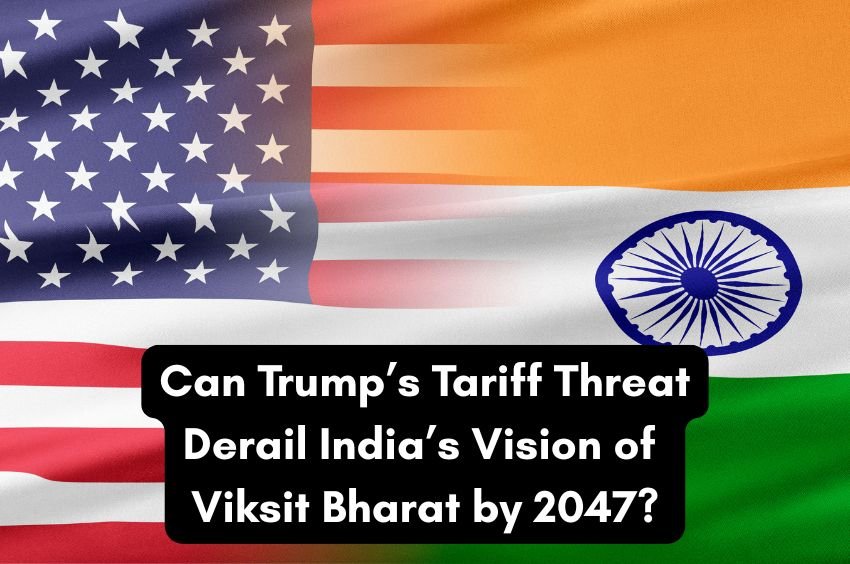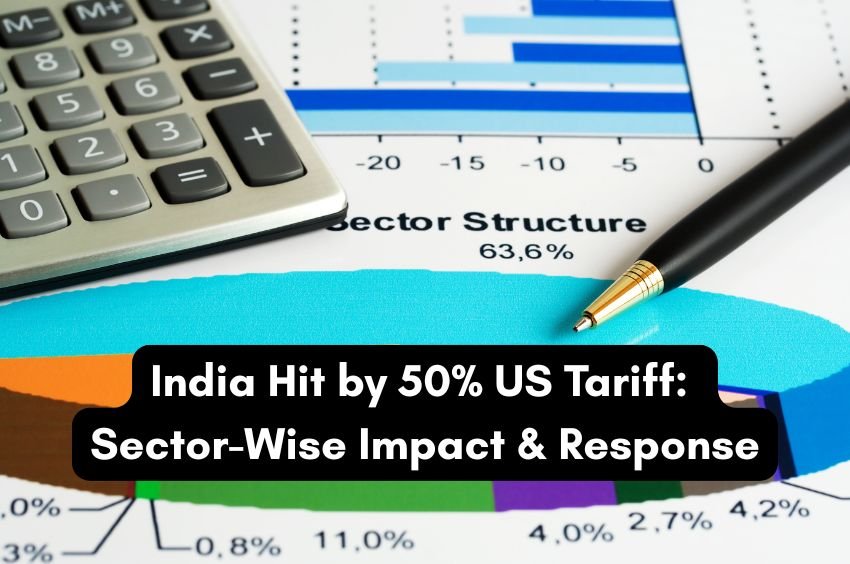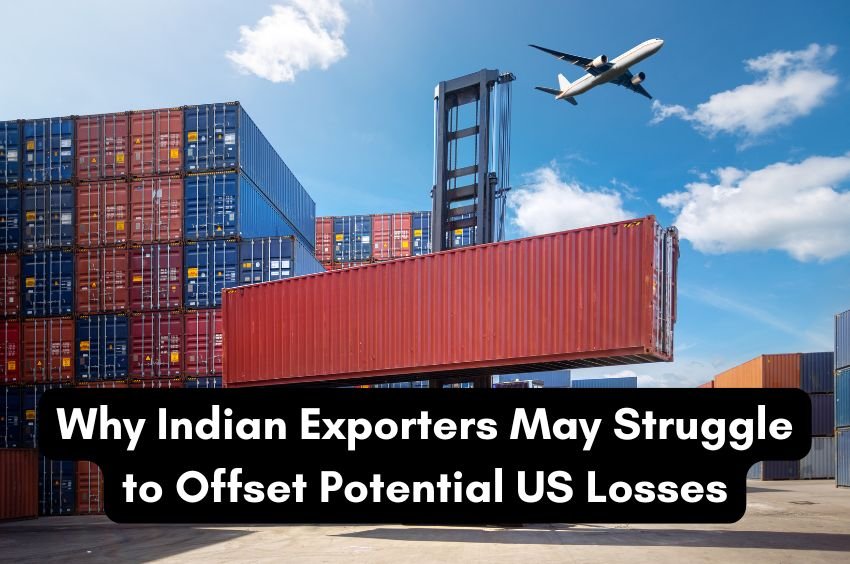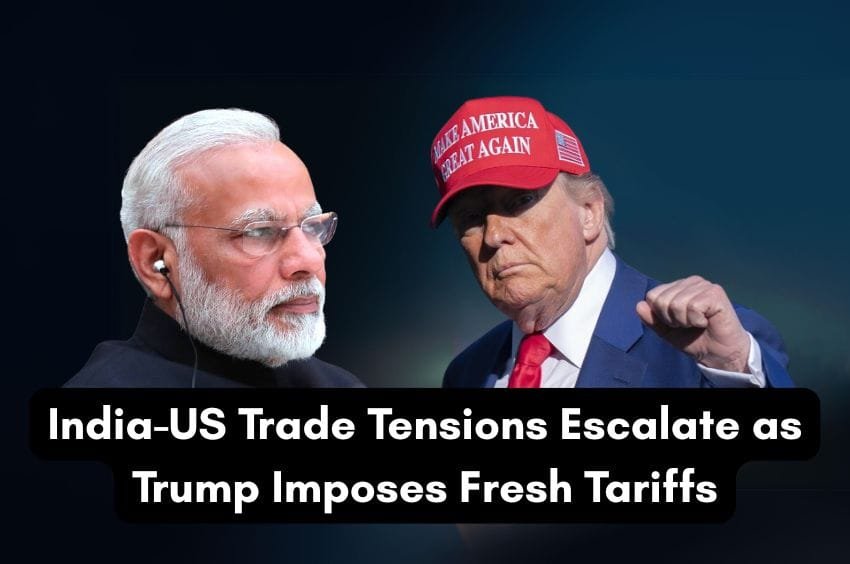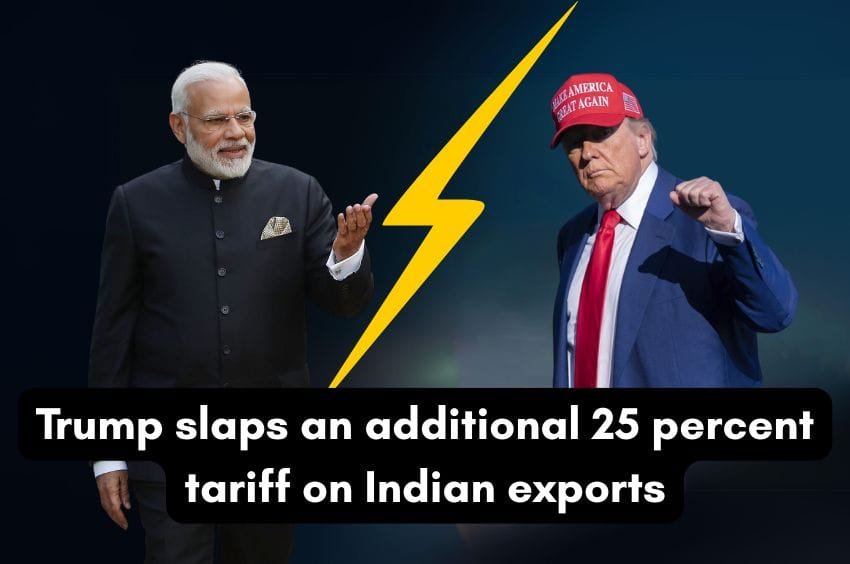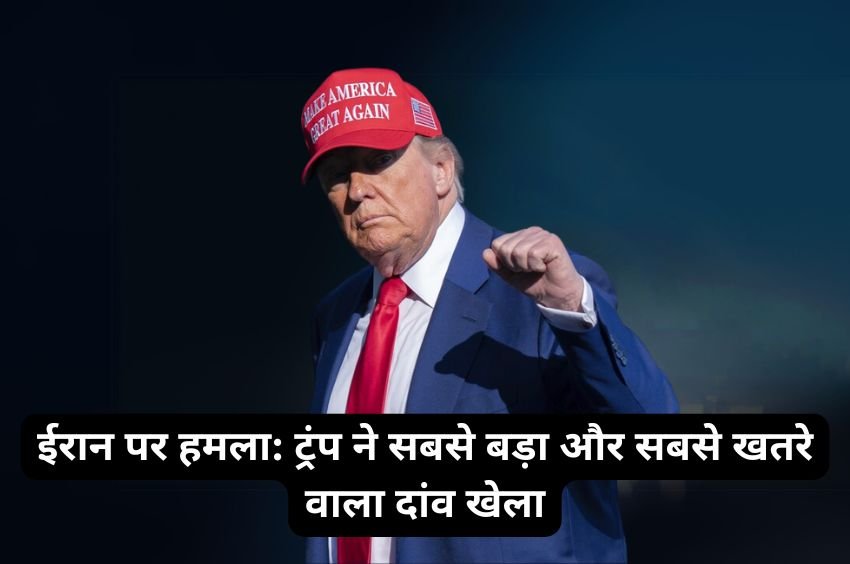The Indian economy is navigating a critical juncture. Donald Trump, who used to be the president of the United States, has suggested putting a 50% tax on Indian exports. This has made people worried about India’s growth through exports and its lofty goal of becoming a developed country-Viksit Bharat-by 2047.
In 2002, the story started as “Incredible India.” After the epidemic, it changed to “Inevitable India” because of changes in the global supply chain and initiatives to rely less on China. But because of growing geopolitical instability and difficult trade talks with the U.S., this story could change to “Isolated India.”
The “China+1” Strategy at Risk
India’s recent momentum under the China+1 strategy – a global push to diversify manufacturing away from China – now faces a significant obstacle.
Key Highlights:
- Trump’s proposed 50% tariff could damage India’s export competitiveness.
- This threatens the U.S.’s prior positioning of India as a strategic counterweight to China.
- Export growth is central to India’s Viksit Bharat goal – but is now under pressure.
India’s Global Export Share Remains Low
Despite policy support like PLI schemes and a large labor force, India’s share of global merchandise exports is still just over 2%, compared to China’s dominant 18%.
| Metric | India | China |
|---|---|---|
| Global Export Share (2024) | ~2.1% | ~18% |
| iPhone Manufacturing Growth | 14x (2020-24) | Declining |
| US Tariff Impact (Proposed) | 50% | Lower |
Initial Success but Modest Gains
India has attracted some high-profile investments:
- Apple: India now manufactures a significantly higher share of iPhones.
- Micron: $2.5 billion investment in Gujarat for chip assembly and testing.
However, NITI Aayog’s Trade Watch Quarterly reveals that India’s gains have been modest, while ASEAN countries – especially Vietnam and Malaysia – have benefited more robustly.
Why Is India Falling Behind in China+1?
A CSEP Competitiveness Index study identifies several bottlenecks:
Structural Weaknesses:
- Low R&D investment.
- High import tariffs.
- Lack of participation in Free Trade Agreements (FTAs).
- Dominance of small-scale, fragmented industries.
- Persistent land acquisition hurdles.
| Country | Trade Agreements (FTAs) | Manufacturing Edge |
|---|---|---|
| Vietnam | Extensive (with EU, US) | Strong |
| Malaysia | High | Strong |
| India | Limited | Moderate |
Vietnam’s success is largely attributed to its broad network of FTAs, giving it preferential market access – something India lacks.
India’s Efforts to Catch Up
Since 2020, India has re-engaged in trade diplomacy:
- Signed FTAs with the UK, Australia, and UAE.
- Ongoing negotiations with the U.S. and EU.
But Trump’s tariff threats cast a shadow over these efforts. A trade deal with the U.S. is crucial if India is to remain a viable China+1 alternative.
Why a U.S. Trade Deal Matters
- The U.S. is India’s largest export destination, accounting for 19% of total exports.
- In FY25, India exported $86.5 billion to the U.S. with a trade surplus of $41.2 billion.
- A 50% tariff would make Indian goods significantly less competitive compared to peers like Vietnam or South Korea.
Economic Risks of High Tariffs:
- Estimated export loss: 0.3-0.5% of GDP
- Potential job losses and investor pullback
- Capital outflows and rupee depreciation
- Dampened foreign investment sentiment
| Export Market | FY25 Exports (US$ bn) | Trade Surplus (US$ bn) |
|---|---|---|
| USA | 86.5 | 41.2 |
| EU | ~75.0 (est.) | ~20.0 (est.) |
Services Sector May Cushion the Blow
India’s services exports – particularly in IT and business process outsourcing – are not affected by these tariffs and are expected to continue growing. However, they may not be enough to fully offset the impact on goods exports.
Final Thoughts
India’s Viksit Bharat by 2047 vision depends heavily on export-led growth. The China+1 approach looked like it might work, but Trump’s tariff plan could stop it in its tracks. India needs to strive for a fair trade deal with the U.S., make its supply chains more competitive, and get rid of structural barriers to protect its economic goals.
The trade discussions between India and the U.S. will have a big impact on both countries’ trade and India’s place in the new global order.
